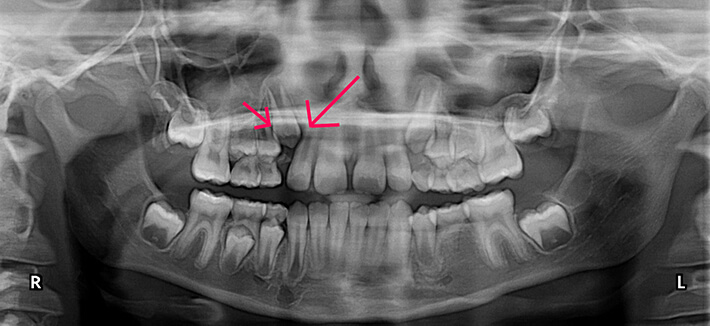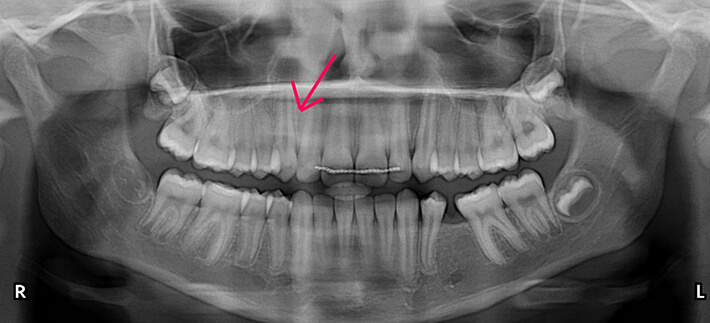Early / Phase I Braces Treatment - Columbus
The Right Time for an Orthodontic Check-Up: No Later than Age 7
What Can A Screening Examination Reveal On A Young Child?
- Orthodontists can spot subtle problems with jaw growth and emerging teeth while some baby teeth are still present.
- While your child’s teeth may appear to be straight, there could be a problem that only an orthodontist can detect by examining your child’s radiograph.
- A check-up may reveal that your child’s bite is fine. Or, the orthodontist may identify a developing problem but recommend monitoring the child’s growth and development, and then, if indicated, begin treatment at the appropriate time for the child. In other cases, the orthodontist might find a problem that can benefit from early treatment.
- Early treatment may prevent or intercept more serious problems from developing and may make treatment at a later age shorter and less complicated. In some cases, the orthodontist will be able to achieve results that may not be possible once the face and jaws have finished growing.
Early Treatment May Give Your Orthodontist The Chance To:

- Guide jaw growth.
- Lower the risk of trauma to protruded front teeth.
- Correct harmful oral habits.
- Improve appearance.
- Guide permanent teeth into a more favorable position.
- Create a more pleasing arrangement of teeth, lips and face.
- May reduce the need for future extractions of adult teeth.
How To Tell If Your Child May Need Early Orthodontic Treatment:
- Early or late loss of baby teeth (your child should typically start losing teeth around age five, and will have all permanent teeth around age 13.)
- Difficulty chewing and/or biting.
- Your child continues sucking his or her thumb after age five.
- Protruding teeth (the top teeth and the bottom teeth extend away from each other.)
- Teeth that don't come together in a normal manner or even at all.
- Shifting of the jaw when your child opens or closes his or her mouth. (crossbites)
- Crowded front teeth around age seven or eight.
Phase 1 Orthodontics FAQs
If you believe your child could benefit from phase 1 orthodontic care, it is only natural if you have questions! When you bring your little one in for an evaluation, Dr. Mason and our team will be happy to speak to you and address anything that is weighing on your mind. In the meantime, you might gain some valuable insight by reviewing the answers to the FAQs that are listed below.
When Does Phase 1 Orthodontics Take Place?
Usually, phase 1 treatment occurs when a patient is between 6 and 9 years old. During this age range, kids usually have a mixture of permanent and baby teeth, making it the perfect time to guide their oral development.
If your child is 6 – 7 years old, they should attend their first orthodontic appointment as soon as your schedule allows. Timing is critical for phase 1 treatment to be as effective as possible and have the greatest long-term benefits.
What Appliances Are Used in Phase 1 Orthodontics?
Phase 1 treatment can involve the use of use various appliances. Here are a few examples:
- Palate expander. Also known as a palatal expander, this device helps to create more space in the upper dental arch.
- Space maintainer. If your child lost one of their baby teeth too soon, a space maintainer can be used to preserve the spot where an adult tooth should go. Otherwise, the other baby teeth might drift into the space and cause problems.
- Herbst appliance. This may be used to address jaw imbalances and improve your child’s bite.
- These can be used to address various forms of misalignment.
Is Phase 1 Orthodontics Painful?
Dr. Mason is careful to make the placement of orthodontic appliances as comfortable as possible. However, it must be acknowledged that some devices can cause a degree of discomfort as they place pressure on the oral structures. In most cases, the pain goes away after a few days. In the meantime, mild painkillers may be used to manage any discomfort.
No one wants to see their child in pain. Remember, though, that early orthodontic treatment may spare them from more severe pain later in life.
Does Phase 1 Orthodontics Affect Diet & Nutrition?
If your child has a removable orthodontic device, they can take it out at mealtimes and eat virtually anything. If their appliance is fixed in the mouth, they may need to stay away from certain items. For example, hard foods might damage braces, whereas sticky foods might cling to them and increase the risk of dental decay. A relatively soft diet tends to be the safest choice for braces.
When your child starts treatment, our team can provide more detailed guidance on what and how they should eat.
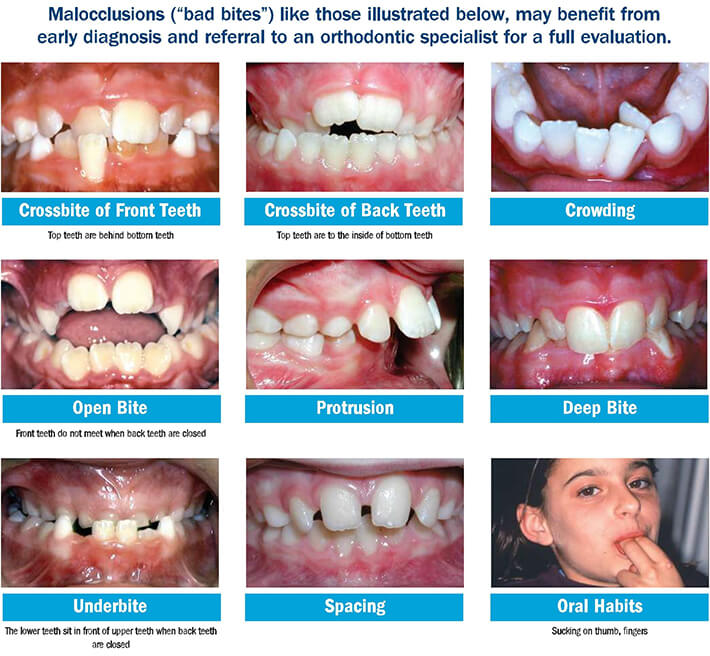
Crossbite Case
Patient presented with bilateral posterior crossbite(narrow maxilla) and underbite. Crossbite and underbite correction performed during phase I. Patient’s profile improved post treatment.
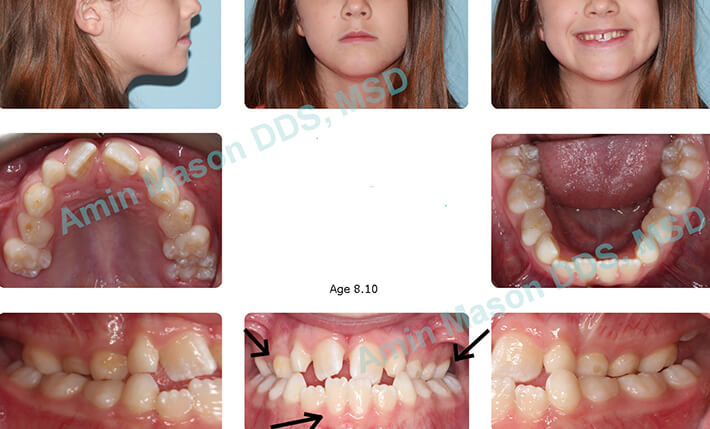
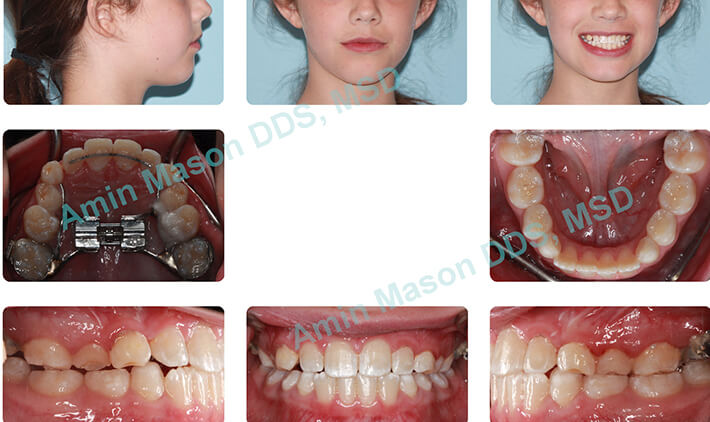
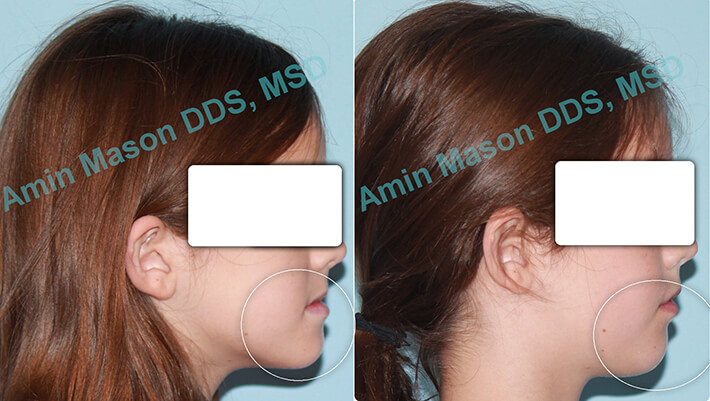
Underbite Case
Patient presented with an underbite and trauma to lower front teeth and gingival recessions. Underbite correction was performed during phase I. Gingival recession improved.
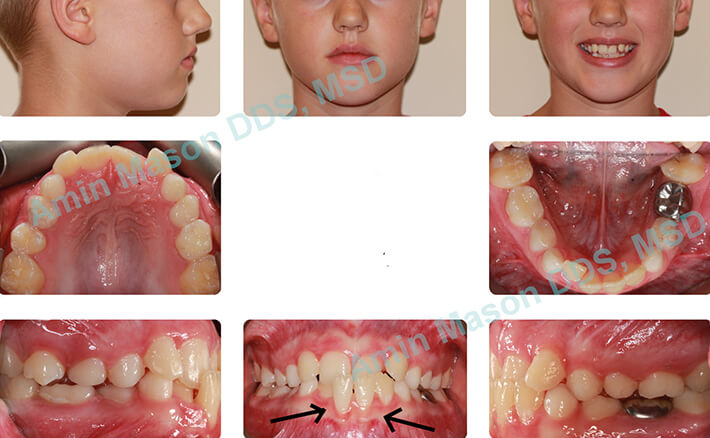
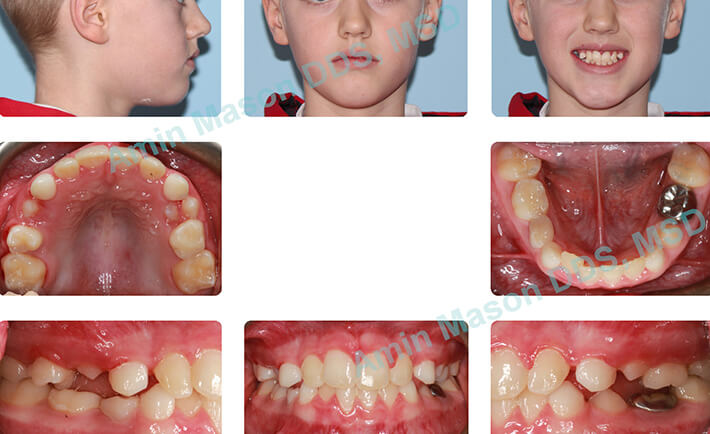
Open Bite Case
Patient presented with an open bite due to thumb sucking habit. Sucking habit was stopped and bite was closed during phase I treatment. After patient lost all of primary (baby) teeth, patient was evaluated for 2nd phase. Parents chose not to pursue 2nd phase of treatment as they were happy with the phase I results.
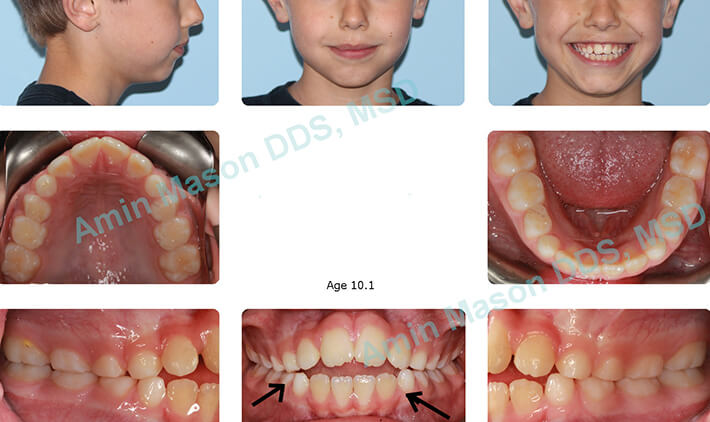
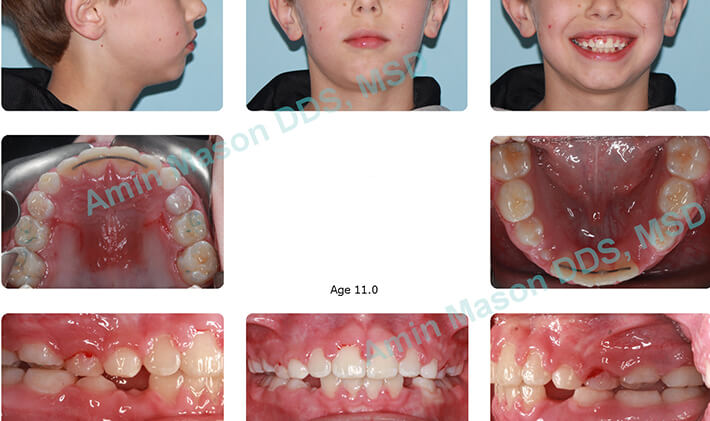
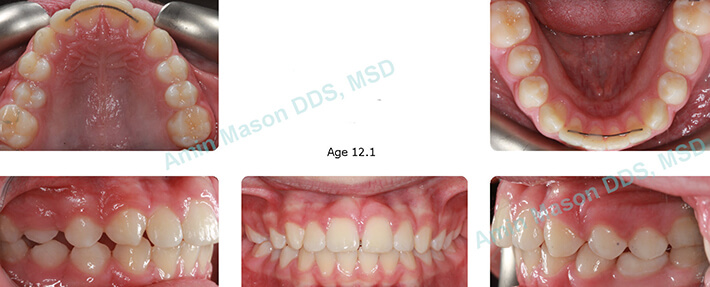
Early Loss Case
Patient presented with early loss of primary tooth #c and impaction of adult tooth #6. During phase I treatment, space was created for tooth #6 and tooth erupted without damaging neighboring teeth.
